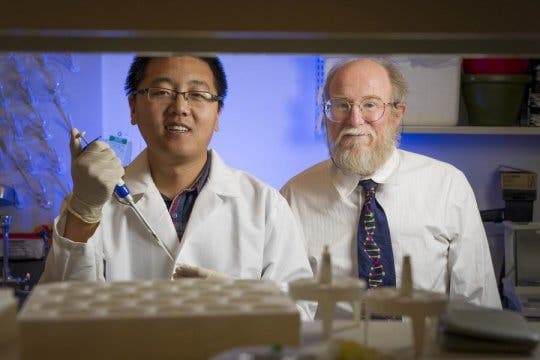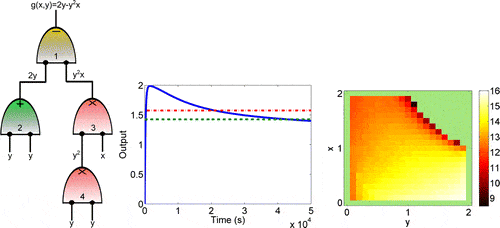
The blueprint molecule that codes every living thing on the planet was exploited by researchers to make something far less glamorous, but still very exciting: a simple calculator. The Duke University researchers toyed around with DNA and managed to make an analog circuit out of it that can do basic mathematical operations like addition and subtraction.
Previously, scientists made DNA computers that could do things like calculate square roots or even play tic-tac-toe. These projects were digital-only, though. The DNA circuit made at Duke University is all analog, meaning it doesn’t need an additional hardware that converts the signal into 1s and 0s.
An analog computer is a form of computer that uses the continuously changeable aspects of physical phenomena such as electrical, mechanical, or hydraulic quantities to model the problem being solved. In our case, instead of measuring changes in voltage as most analog computers and devices do, the DNA circuit reads the concentrations of various DNA strands as signals.
DNA has this natural ability to zip and unzip, as its nucleotide bases can pair up and bind in predictable ways. This makes it an excellent material for logic gates.
First, Duke graduate student Tianqi Song and computer science professor John Reif synthesized short pieces of DNA, which were either single-stranded or double-stranded with single-stranded ends, then mixed them together. What happens next is a single DNA strand will perfectly bind to the end of a partially double-stranded DNA. In the process, the previous bond strand detaches — like someone cutting in on a dancing couple.
The now orphaned strand can now pair up with other complementary molecules in the same circuit, creating a domino effect.

As the reaction reaches equilibrium, the researchers measure concentrations of outgoing strands to solve math problems, based on input concentrations and the predictable nature of locking DNA. And if this sounds like it takes a lot of time, you’re right. Unlike a silicon-based computer which can perform a simple math operation in an instant, the DNA circuit takes hours.
So why are scientists even working on this? Well, it’s not just for the sake of experimentation, although this too is well worth it sometimes. I mean, a computer made from DNA? That just sounds very exciting to try, besides the practical applications which we might uncover by working in such an obscure field.
The other thing that makes this sort of research novel is that unlike previous attempts, the circuit is analog. The test-tube DNA circuit can also operate in wet environments and can very tiny, unlike a conventional digital computer. Theoretically, analog DNA circuits can be used to make some very sophisticated operations such as logarithms and exponentials — this is next on the list, for the Duke team. There’s also hope that at some point these circuits could be embedded in bodies and release DNA and RNA when a specific blood marker value lies outside a given range.
Findings appeared in the journal ACS Synthetic Biology.






